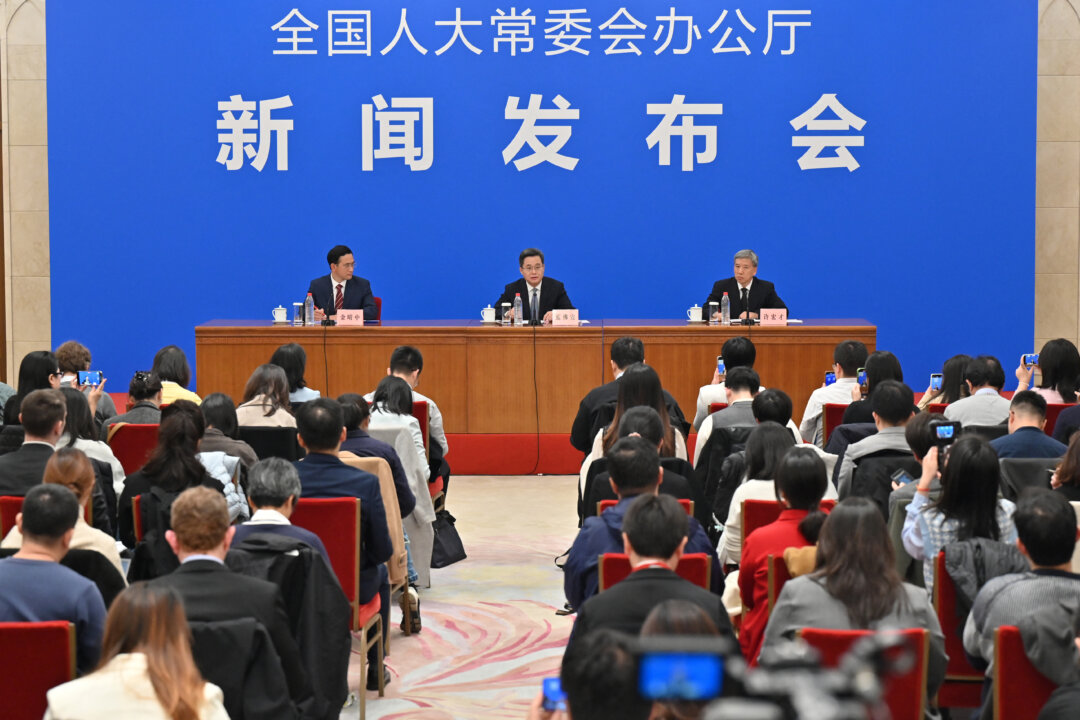China focuses on addressing local governments’ hidden debts, while it braces for the impact of a second Trump term.
Beijing has unveiled a 10 trillion yuan ($1.4 trillion) package to allow local governments to refinance their hidden debt, approved by China’s rubber-stamp legislature at the end of its five-day meeting on Friday.
China’s local governments will have access to 6 trillion yuan ($836 billion) in new special-purpose bonds over the next three years and a repurposed 4 trillion yuan ($557 billion) budget—originally approved for infrastructure projects—over five years.
“Hidden debt” refers to debt not reported in the local governments’ financial books.
The above measures will give local governments fiscal breathing room and increase transparency by transferring the hidden debt to their balance sheets. Along with the debt-laden property market, highly leveraged local governments are one of the major long-term economic problems whose impact was exacerbated by COVID-19.
At a press conference on Friday, Chinese Finance Minister Lan Fo’an disclosed local governments’ hidden debts, which stood at 14.3 trillion yuan ($2 trillion) at the end of 2023. In August, the International Monetary Fund estimated the debt level to be much higher, at 60 trillion yuan ($8 trillion), or half of China’s gross domestic product (GDP).
According to Lan, the 10 trillion yuan package would decrease local governments’ hidden debts to 2.3 trillion yuan ($321 billion) by the end of 2028. He also vowed “zero tolerance” for local governments incurring new hidden debts, calling it an “iron rule.”
Due to Chinese authorities’ past record of underreporting and covering up information, it is difficult to assess the actual amount of local government debt and the state of China’s economy.
China announced on Sept. 24 a series of monetary policies that freed up 1 trillion yuan ($140 billion) for new lending. Since then, the market has been anticipating the corresponding fiscal policy to stimulate the demand side of the economy, which is still yet to come.
The Chinese regime held several press conferences on Oct. 8 and Oct. 12, discussing a fiscal stimulus without mentioning any concrete numbers. After that, the five-day meeting that ended on Nov. 8 with top officials became the focal event that the market and analysts had hoped for regarding a sizable spending package. That didn’t happen; the officials repeated the approach of not releasing specific numbers in their next move.
This year, the world’s second-largest economy is expected to grow below its 5 percent target. According to an Oct. 18 statement by China’s National Bureau of Statistics, official GDP growth was 4.6 percent during the third quarter, the slowest quarterly rate of the year.
The country’s exports have remained one of the few bright spots of the Chinese economy this year. In October, exports grew by 12.7 percent year over year, the fastest in 27 months. This increase was largely due to importers stockpiling goods in anticipation of a tariff hike, as many expected that former President Donald Trump would be reelected.
During his presidential campaign, Trump repeatedly said he would impose a 60 percent or higher tariff on all Chinese goods imported into the United States.
He went on to win the Nov. 5 election and will become the 47th president of the United States. Thus, China’s exports will likely increase further before the tariffs become effective next year.
On Nov. 1, Goldman Sachs estimated a 20 percent tariff on Chinese goods to knock off 0.7 percent of China’s GDP growth by shrinking the country’s exports.

